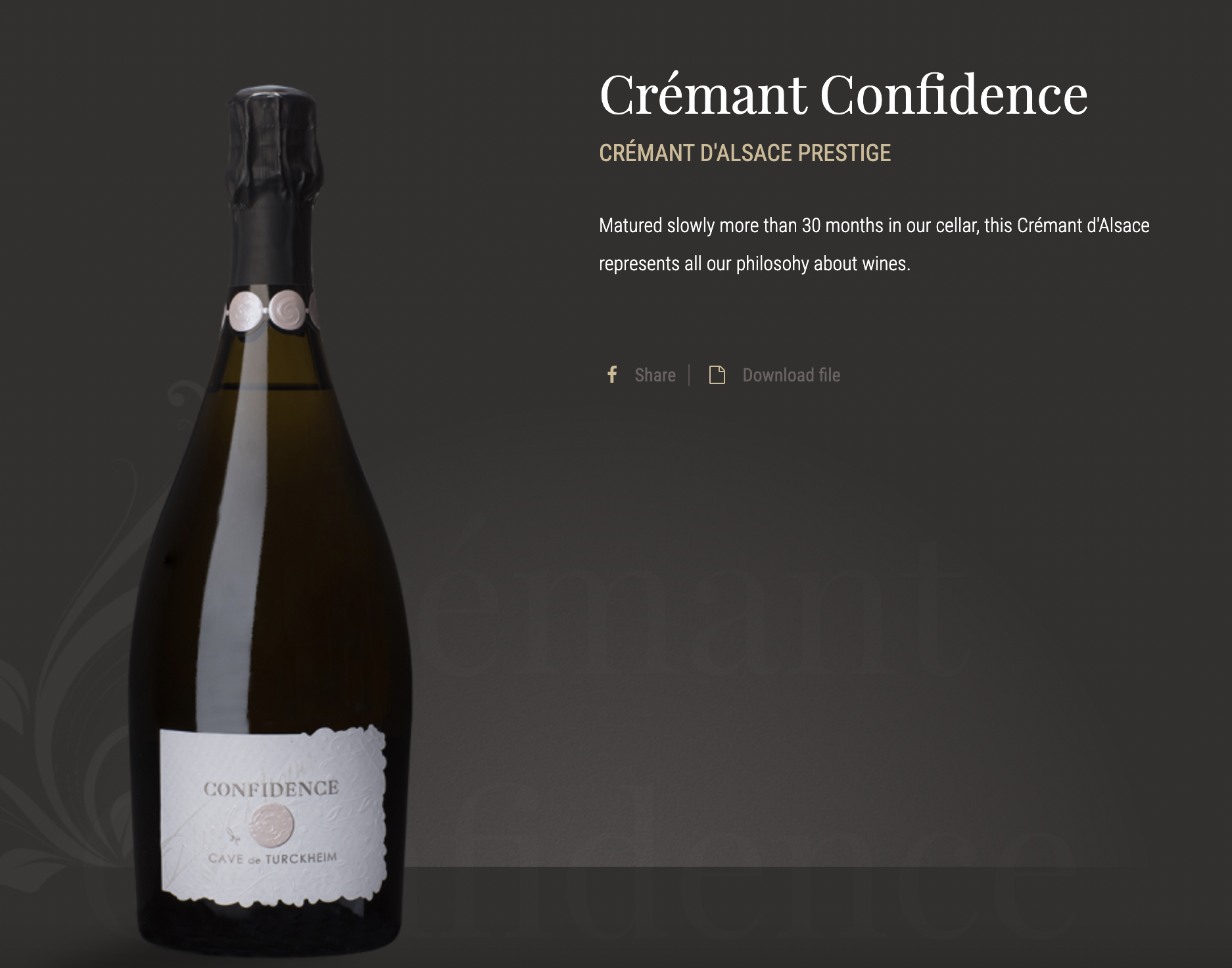Detailed Overview of Crémant d’Alsace
Introduction: Crémant d’Alsace, a sparkling jewel in the crown of Alsace's wine heritage, accounts for a quarter of the region's wine production. This significant production volume is sustained by a rich tapestry of approximately 500 winemakers, each adding their nuanced touch to this effervescent treasure.
Grape Varieties and Vineyard Management:
Pinot Blanc, with its early budding and ripening characteristics, is the cornerstone of Crémant d’Alsace. Alongside Auxerrois, Chardonnay, Riesling, Pinot Gris, and Pinot Noir (exclusively for rosé), these varieties are tailored for sparkling wine production.
The vineyards, mainly located on the eastern slopes of the Vosges foothills, benefit from a continental climate, marked by hot days and cool nights. This microclimate is pivotal in achieving the grape's flavor ripeness while maintaining high acidity - a hallmark of premium sparkling wines.
Winemaking Process and Innovations:
The production process begins with early harvesting to preserve acidity, followed by hand-picking and whole-bunch pressing. This method is crucial for reducing phenolic content and enhancing juice quality.
Crémant d’Alsace’s winemaking is a blend of tradition and innovation. While most wines undergo a relatively short lees aging process (around 12 months), leading producers like Cave de Turckheim extend this period, sometimes up to two years, even for their entry-level wines. This technique enriches the wine with complex autolytic characters, adding depth beyond the primary fruit flavors.
Notable Producers and Styles:
Maison Bestheim, a prominent cooperative, stands out as a key producer. Its extensive vineyard holdings and collaboration with numerous growers exemplify the region's cooperative spirit.
The region’s dedication to quality is embodied in the Crémant d’Alsace Emotion category, which mandates a minimum of 24 months on lees and a blend dominated by Pinot Blanc, Chardonnay, and Pinot Noir. This category showcases the pinnacle of Alsace’s sparkling winemaking.
Crémant d’Alsace, with its harmonious blend of traditional and innovative winemaking practices, distinct grape varieties, and unique terroir, stands out in the world of sparkling wines. Its growth in production and the establishment of premium categories like Crémant d’Alsace Emotion signify its burgeoning recognition and the relentless pursuit of excellence by Alsace's vintners.
In-Depth Bullet Points:
Crémant d’Alsace represents 25% of Alsace's wine production, a testament to its significance.
Key grape varieties include Pinot Blanc, Auxerrois, Chardonnay, Riesling, Pinot Gris, and Pinot Noir (solely for rosé).
The vineyards thrive in a continental climate, ideal for developing the necessary acidity in grapes.
The early ripening of Pinot Blanc aligns perfectly with the early harvest strategy for sparkling wines.
Whole-bunch pressing during harvest is integral for maintaining high-quality juice with lower phenolics.
Extended lees aging by top producers adds complexity and desirable autolytic characteristics.
Cave de Turckheim is a notable producer renowned for its extended lees aging practices.
Crémant d’Alsace Emotion category demands rigorous quality standards, including prolonged lees aging.
Maison Bestheim, a leading cooperative, exemplifies the region's collaborative winemaking approach.
The dominance of Brut style in Crémant d’Alsace, with dosage levels typically ranging from 8–10g/L, balances the wine’s high acidity.

